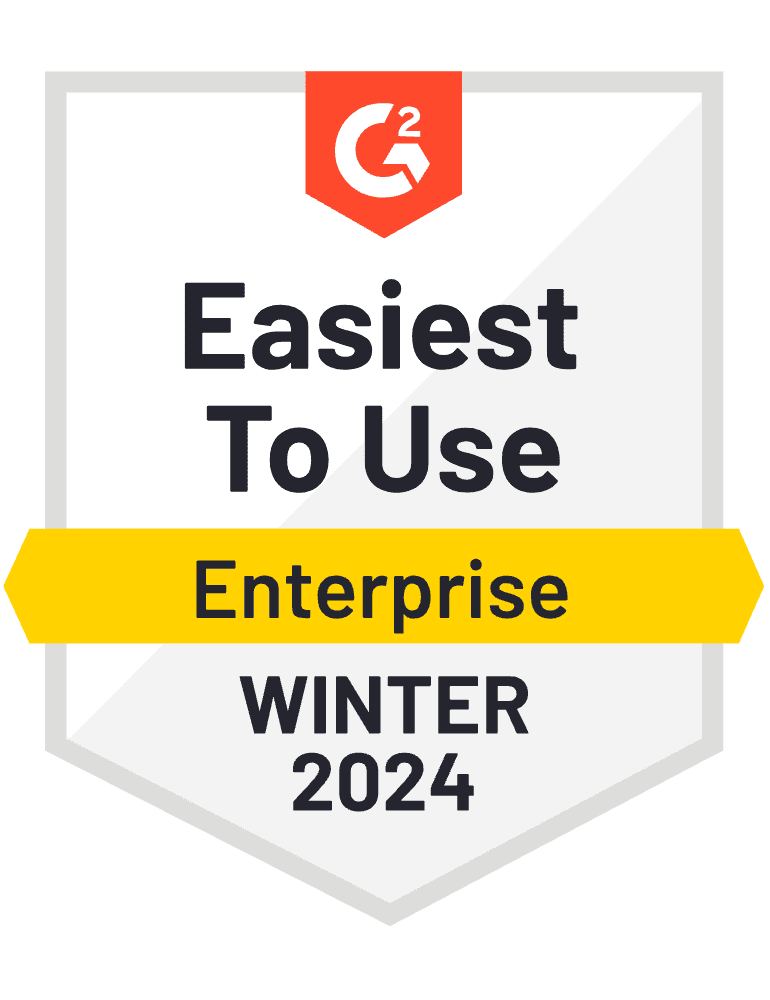How to Improve Customer Education in 4 Steps
Anna Spooner | WorkRamp Contributor
View bioLearning Tips Straight to Your Inbox
In this post:
Are you searching for ways to maximize the impact and ROI of your customer education program?
Studies show that high-quality customer education can increase bottom-line revenue by 6.2 percent, customer retention by 7.4 percent, and decreases support costs by 6.1 percent. It can also significantly increase customer renewals.
With the proper process, your customer education program can be one of the best in your industry and, more importantly, extremely valuable for your users.
Here are four steps to improve your customer education program to benefit your customers and your organization.
Step 1: Assessing your current customer education strategy
Before making an improvement plan, you must understand how your customer education efforts perform.
Ask yourself these questions:
- What’s the current participation rate?
- What customer feedback are you getting?
- How is your customer education program driving renewals and retention?
Here’s what to consider in each area.
Customer participation
If you have the right all-in-one learning platform, tracking customer participation in your training program is easy. However, many organizations need help finding an easy way to measure customer participation and program impact.
Some metrics you can use to measure participation include:
- Visits to your course page or logins to training
- Number of course starts
- Number of course completions
- End-of-course assessment results
With these numbers, you’ll see if customers are engaging with your program. If engagement is low, you can implement strategies to increase participation.
Read More: 4 Strategies to Promote Your Customer Education Academy
Customer feedback
What do customers think of your program? The only way to know is to ask.
The best way to get this information is to build a feedback form into your training process. For example, you could include a form at the end of each module and another at the end of training.
Why not ask once at the end of the program?
Because you’ll miss feedback from customers that don’t finish the training process. You’ll also miss out on feedback that can help you improve individual modules, and it will give you a good idea of where your customers are dropping out of your training process.
Beyond feedback during training, talk to your customers regularly to discover the pain points and challenges they’re experiencing. But, again, going straight to the source is the best way to glean valuable insights you can put into action.
“People connect to stories, so you’ve got to be able to share and distribute customer stories and data. We’ve invited customers to come to town hall meetings. Invite your customers to come and carve out time to allow them to tell their stories.”
–Kristi Faltorusso, Chief Customer Officer, ClientSuccess
KPIs for customer education
The final step is to measure key performance indicators for your current customer education program. These metrics show you your impact on the company’s bottom line.
Here are some customer education metrics to track:
- Customer support requests
- Churn rate
- Customer lifetime value
- Customer referrals
- Customer satisfaction
- Upsells and cross-sells
The good news is that wherever these KPIs are today, when you improve your customer education program, you’ll also improve these metrics.
Step 2: Determining pain points from your current strategy
Now that you’ve fully assessed your customer education program, you know where things are falling short. However, these pain points are opportunities to improve your program.
Be sure to note the frustrations customers express about your program. None of the improvements you make will have a difference if there’s something causing customers not to participate.
“You can’t be afraid of customers who have a negative experience to share. A story is a story, and that’s how we learn. That’s how we get better.”
-Kristi Faltorusso
Sometimes the number of opportunities may be overwhelming, so prioritize them based on importance and impact. Focus on the improvements that make the most significant difference for customers and the KPIs that matter most to your organization.
Step 3: Setting new goals for your customer education strategy
Next, take your list of opportunities and determine the goals for your customer education strategy.
To avoid conflict and future problems, ensure key stakeholders have the opportunity to share their priorities. When everyone feels heard, they’re more likely to support the final decision even if they don’t get everything they want.
You may decide that creating a customer certification program will help you drive the KPIs you’re focused on. In addition, having buy-in from multiple departments will make it easier to get the information you need to implement and deploy the program.
Once you’ve set new educational program goals, it’s time to implement the changes.
Step 4: Improve customer education through scalability and future-proofing
One of the most important changes you can make to improve customer education is to ensure your program is scalable.
When a company is smaller, onboarding and customer education are very hands-on. You can create customer demos for specific needs and use cases. Unfortunately, this isn’t sustainable as your company grows, so it’s essential to make customer education scaleable.
This might mean investing in an all-in-one platform that consolidates employee development, sales enablement, and customer education in one place. With this approach, customer training is on-demand, and users can choose modules based on their needs and have a readily available self-service library of resources.
Qualified, a pipeline generation platform for revenue teams that run on Salesforce, used WorkRamp to create Qualified University to educate customers with content like videos, quizzes, and certifications.
Tony Vaughn, Qualified’s Director of Customer Education, started when the organization had no external customer training platform. Instead, he relied on blog posts and marketing pages. With WorkRamp, he successfully scaled customer education, providing engaging training and significantly increasing customer renewals. Now, the company can provide high-quality training to every customer without manual processes getting in the way.
Other factors to consider to improve customer education
Beyond setting goals based on KPIs, you can improve customer education by implementing best practices. Consider these ideas.
Use customer education to address one big challenge
Some teams choose to improve customer education programs by choosing a single challenge to address each year.
For example, you may focus on how customer education can improve product adoption and then, the following year, work with customer success to decrease time-to-value.
Choosing a single challenge to address can help you improve your program in a focused, strategic way.
Introduce customer certifications
Customer certification programs drive significant improvements in retention and bottom-line revenue. These training programs are more rigorous than traditional customer education, and the certification showcases the learner has mastered your product or service.
Certifications give customers a reason to learn more about your product or service and give them a structured approach to gaining expertise.
There are a variety of best practices for developing a successful program, from setting clear goals to creating meaningful, engaging training content.
Optimize content creation
No matter how many people you have on your team, you need an efficient, effective content creation process to develop scaled training.
One of the benefits of using WorkRamp is the ability to take advantage of the Content Library, which gives you a headstart on various content types. You can also use versions of the same content to target different audiences and create different types of training, including microlearning or longer curricula.
An optimized content process gives customers the same high-quality experience with your education program.
Use WorkRamp to improve your customer education
Knowing how to build an effective customer education program is the first step, but you need the proper foundation.
WorkRamp is an All-in-One Learning Platform that can help you drive engagement and revenue through scalable customer training.
Ready to improve your customer education program? Contact us to schedule a free, personalized demo!
Complete the form for a custom demo.
Recent Posts
- WorkRamp Launches AI Practice to Revolutionize Sales Enablement July 22, 2024
- How to Recognize Employee Burnout July 17, 2024
- What is the Best SCORM-compliant LMS? July 10, 2024
- How to Make a Training Module For Online Learning (2024 Guide) July 1, 2024
- The Role of Emotional Intelligence in Sales Enablement June 28, 2024
Anna Spooner
WorkRamp ContributorAnna Spooner is a digital strategist and marketer with over 11 years of experience. She writes content for various industries, including SaaS, medical and personal insurance, healthcare, education, marketing, and business. She enjoys the process of putting words around a company’s vision and is an expert at making complex ideas approachable and encouraging an audience to take action.
You might also like
Learn to build a customer academy with our step-by-step guide
If you're like most organizations, you're always looking for ways to serve your customers better. But what if there was a way to not only keep them coming back, but also turn them into advocates and champions for your brand?
Read More
Learn how a customer education program can help you boost engagement and retention
An effective customer ed program can help users and have a significant impact on long-term business goals.
Read More
Academy launch best practices
Congratulations, your customer academy is ready. But before you release it to the public, follow these tips.
Read More
Decrease Ramp Time and Increase Revenue
Get in touch to learn how WorkRamp can help you achieve your learning and development goals.
Request a Demo



